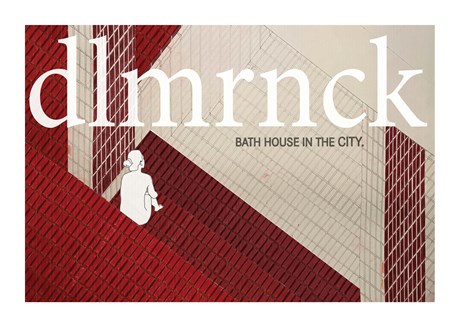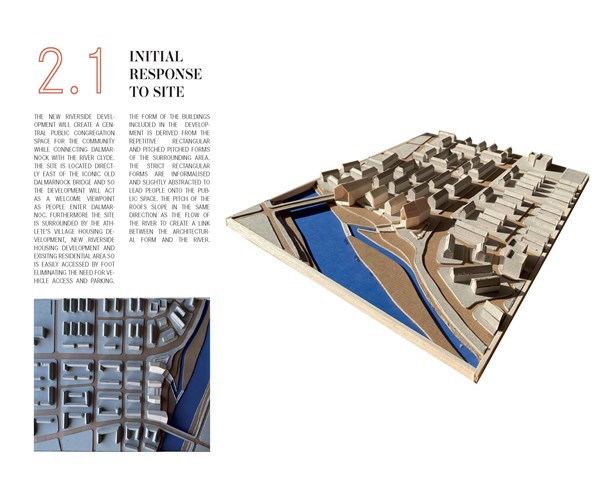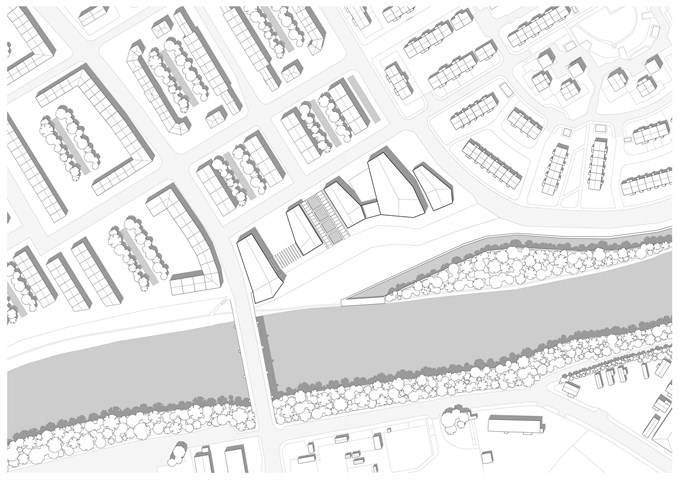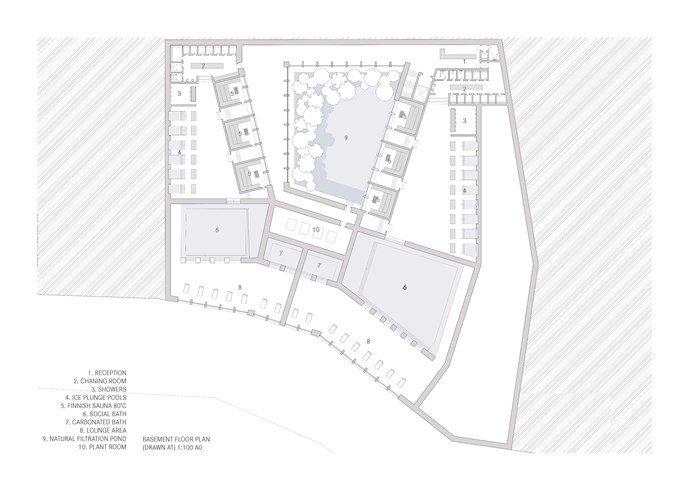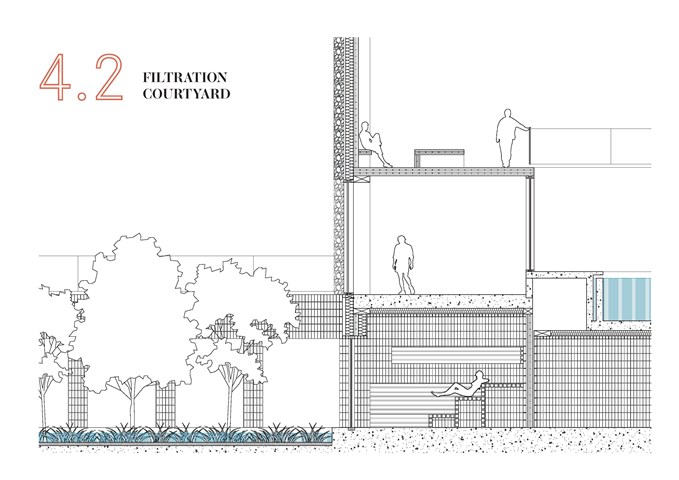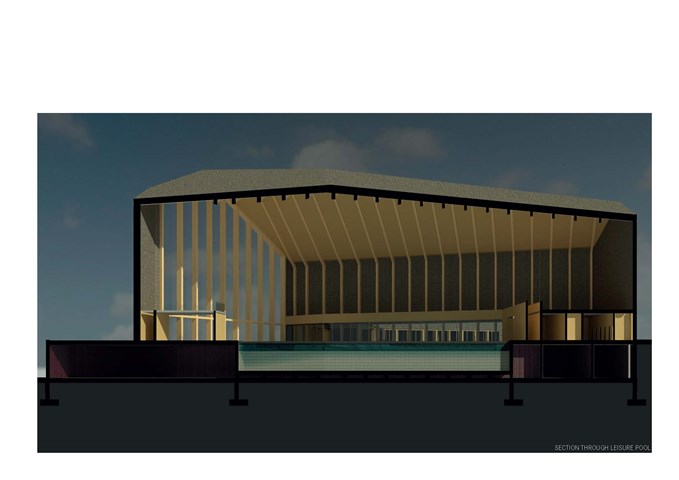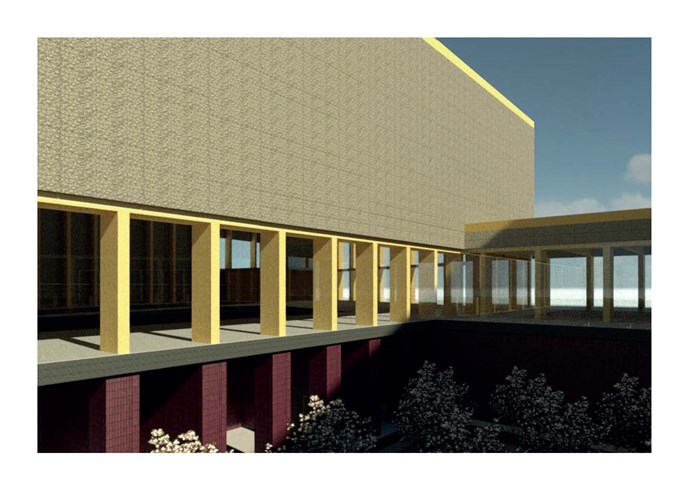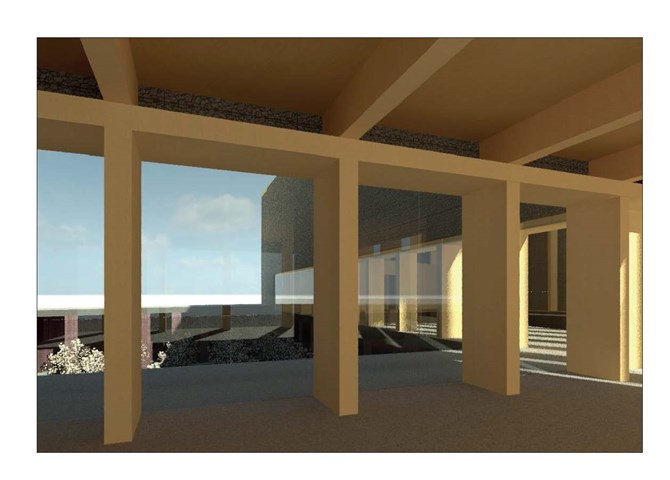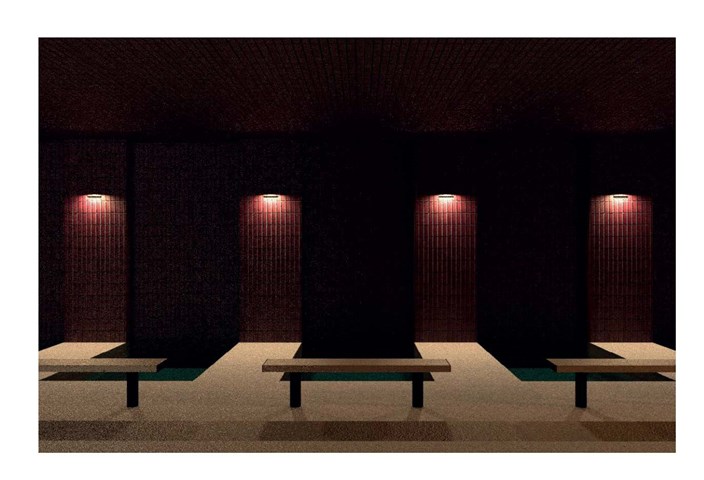To Care: Bath House In The City
Prior to the boom of industrialisation in Glasgow during the 19th century people would bath and wash their clothes in the River Clyde as the typical family did not have the facilities to do so within their own homes. The introduction of mass industry in the city later caused the river to become too polluted to be safe to bath in.
In the mid 1800s the city council established a Sanitary Act to provide public wash houses at 4 accessible points in the city to offer washing facilities to Glasgow residents. Between the 1870s and 1890s 5 private bath houses opened up across the city providing exclusive, luxury bathing facilities to affluent, paying members. By the early 1900s over 20 bath houses existed across Glasgow and became an integral part of everyday life.
Bath houses, nicknamed ‘steamies’ because of the volume of steam that would accumulate following the introduction of hot water facilities, tended to be built as part of a larger swimming baths complex and were an integral part of women’s lives and community identity. They became a place where women could get out of the house to catch-up with friends, and many wash houses had nurseries in which children could play and be looked after.
As the development of technology in the 20th century enabled at-home washing machines to become available for working class people the need for community ‘Steamies’ decreased with the last working wash house in Glasgow being closed in 1990. The local Steamie not only offered women and families sanitary facilities, but it also brought communities together and offered families a chance to integrate as part of everyday life. This project seeks to provide Dalmarnock with a modern-day alternative to the Glasgow ‘Steamie’ by creating a focal point for the community linking the area back to the River Clyde.
Dalmarnock is located on the north bank of the River Clyde on a significant floodplain on the neck of a meander. The site’s extended contact with the river creates a flood risk which is a factor that must be considered within the design process. This connection to water has inspired a number of interventions that will utilise the water to harvest sustainable, affordable energy for the residents of Dalmarnock; an innovative way of treating water that makes the most of the floodplain by planting reeds in a large wetland; various water plazas that transform from outdoor spaces to gather, skateboard, exercise, etc into shallow pools full of water when the land floods or is subject to a large downpour of rain. A visual connection to the water acts as a link to the river that was once essential in the area’s rich industrial history and now sustainable future. So too does a tangible, visual connection to water remind residents of the climate crisis we are facing and how large a threat flooding in cities will become.
Blending the theme of hydropower, clean water and flooding solutions with Dalmarnock’s strong sporting identity is key to the urban strategy. This project seeks to reinvigorate the area by enforcing a strong identity and infrastructure that will benefit residents and attract people to the area.
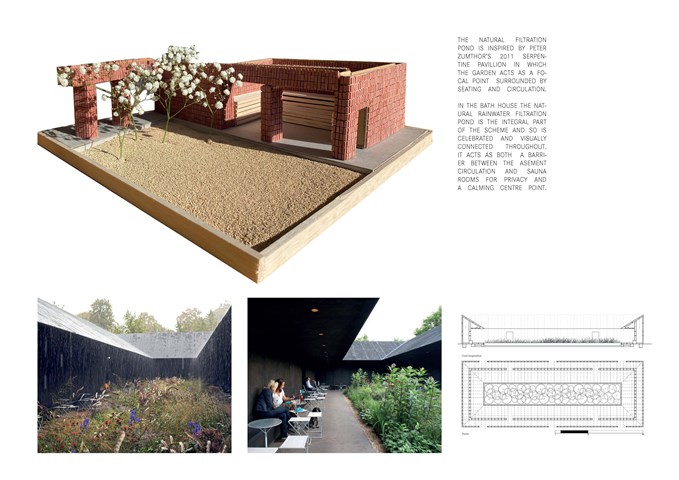
Courtyard Model 1:35
Model of the filtration courtyard exploring the relationship of materiality between the basement circulation, filtration pond and onlooking sauna rooms.
